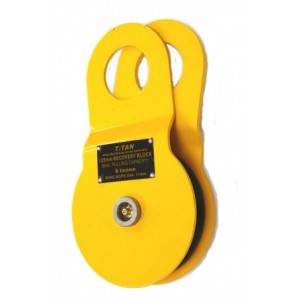The Complete Guide To Pulleys In NZ: Types & Where To Buy
A pulley is a grooved wheel that guides a rope, wire or belt so you can change direction, lift more easily, or transfer power between shafts. A single fixed pulley simply lets you pull down to lift up; add moving sheaves and you gain mechanical advantage. In workshops and on boats, pulleys also drive machinery via V-belts, timing belts and flat belts.
This NZ-focused guide walks you through the common types you’ll find here—lifting and rigging blocks, arborist and marine pulleys, and power-transmission sheaves—plus materials, bearings and corrosion resistance. You’ll learn sizing and compatibility, how to read ratings and standards, safety and maintenance basics, typical price ranges, and where to buy pulleys in New Zealand (retail and online), so you can compare options and choose confidently.
Pulley types you’ll see in New Zealand
Across NZ chandleries, engineering suppliers and outdoor stores you’ll find pulleys for lifting, hauling and drives. The main families are rigging blocks, general‑purpose swivel‑eye singles, power‑transmission sheaves, and specialist gear for marine, arborist and rescue jobs.
- • Lifting/rigging blocks: Single, double or triple sheave units for hoisting loads.
- • Swivel‑eye single pulleys: Compact utility units, often in AISI 316 stainless for marine use.
- • V‑belt pulleys (taper‑lock): Drive sheaves for machinery with interchangeable bushes.
- • Timing and flat‑belt sheaves: For synchronous and conveyor-style power transmission.
- • Arborist/rescue pulleys: High‑efficiency, rope‑friendly hardware for hauling and redirects.
Mechanical advantage basics for lifting with pulleys
When you rig pulleys for lifting, mechanical advantage (MA) is how much your pull is multiplied. In a block and tackle, count the rope parts that directly support the load. You trade distance for force: more sheaves mean less effort but more rope travel, and friction trims the real gain.
MA ≈ number of supporting rope parts; Effort ≈ Load ÷ MA. Examples: single fixed pulley = MA 1 (direction change only); one moving sheave = MA 2; paired sheaves can give 3:1 or 4:1 depending on reeve.
Lifting and rigging blocks: single, double and triple sheaves
Whether you’re hoisting an outboard at the marina or shifting beams on site, lifting and rigging blocks are the workhorse pulleys. A single sheave mostly redirects force; double and triple sheaves increase the number of supporting rope parts for real hauling power, with more rope travel and some friction loss. In NZ you’ll find compact swivel‑eye singles in AISI 316 stainless for marine use, alongside larger blocks for heavier lifts.
- Check the WLL (Working Load Limit): Use within the stated rating; some products also note a design factor (e.g., 4:1 MWL:MBL on certain stainless singles).
- Match rope to sheave: Choose a sheave diameter and groove that suit your rope or wire to reduce wear and improve efficiency.
- Prioritise corrosion resistance: Stainless (AISI 316) suits marine environments; other finishes fit general rigging tasks.
Power transmission pulleys: V-belt, timing and flat
For machinery drives in workshops, farms and factories, power transmission pulleys couple motors to pumps, fans and compressors. Selection affects speed ratio, torque capacity and slippage. In New Zealand you’ll commonly see taper‑lock styles and metric vee profiles that match widely available belts and bushes from local engineering suppliers.
- V‑belt pulleys: Broadly available in taper‑lock “taper fit” styles and metric profiles like SPA/SPB. Pick groove profile/count and pulley diameters to set ratio and power capacity.
- Timing pulleys: Toothed for positive, no‑slip drive and precise speed/position control; ideal when synchronisation matters.
- Flat pulleys: Smooth, efficient where high speeds and light loads apply (e.g., conveyors), but rely on belt tension and alignment for grip.
Specialty pulleys for marine, arborist and rescue use
For boats, tree work and rope rescue, specialty pulleys balance efficiency, durability and control. Marine models lean on corrosion‑resistant AISI 316 stainless with swivel eyes to reduce line twist. Arborist and rescue pulleys focus on smooth running and rope‑friendly sheaves for efficient hauling.
- Marine: AISI 316 stainless, polished finish, swivel‑eye singles.
- Arborist/rescue: Smooth, efficient hauling; match rope size to sheave.
Materials, bearings and corrosion resistance
NZ conditions—salt air, spray and grit—mean your materials and bearings choice matters. For marine pulleys, AISI 316 stainless (often polished) resists corrosion; for general rigging, galvanised or painted steel offers value; aluminium housings keep weight down, and polymer sheaves are rope‑friendly. Sealed ball‑bearing sheaves give maximum efficiency for hauling, while plain/bronze bushes tolerate shock and simpler maintenance. Whatever you pick, rinse after salt use and monitor for pitting or rough‑running bearings.
Rope and belt compatibility and sizing
Getting the right fit between your rope or belt and the pulley sheave is what protects gear, boosts efficiency and keeps ratings meaningful. Match groove profile, width and diameter to the manufacturer’s stated compatible sizes, and remember that NZ engineering suppliers commonly stock metric vee sections and taper‑lock drive options.
- Rope to sheave: Choose pulleys whose groove and stated range suit your rope diameter; mismatches pinch or slip.
- Rope type: Use fibre‑rope sheaves for soft ropes; wire needs dedicated wire‑rope sheaves.
- V‑belts: Match the belt section and pulley profile (e.g., SPA/SPB) and the number of grooves.
- Timing belts: Pitch and width must match the timing pulley.
- Bush/shaft fit: For taper‑lock pulleys, pick the correct bush size to suit your shaft.
How to choose the right pulley for your job
Choosing the right pulleys starts with the job. Are you hoisting, hauling or driving a machine? Work backwards from the load, the environment, and the rope or belt you’ll run. Then confirm attachment style, bearing type and sizing. A good pulley choice makes lifting safer and drives smoother, with less wear and wasted effort.
- Job type: Lifting blocks (single/double/triple) vs V‑belt/timing/flat drive sheaves.
- Load & rating: Set max load; use the stated WLL; note any design factor (e.g., 4:1).
- Line/belt match: Rope diameter to groove; wire needs wire‑rope sheaves; SPA/SPB and belt pitch/width for drives.
- Environment: AISI 316 stainless for marine; sealed bearings for wet/gritty conditions.
- Efficiency & control: Ball‑bearing sheaves, swivel eyes, and beckets for cleaner, lower‑friction reeving.
- Fit & service: Shaft size/taper‑lock bush, alignment/clearance, and local parts availability in NZ.
Understanding ratings, specs and standards (NZ context)
To choose pulleys safely in New Zealand, read the manufacturer specs—not just the marketing. For lifting blocks and swivel‑eye pulleys, the critical numbers are WLL/MWL, MBL and the design factor. Some stainless singles quote a 4:1 MWL to MBL factor, signalling the margin between working use and ultimate break. For drive sheaves, focus on belt section (SPA/SPB), groove count and the correct taper‑lock bush for your shaft.
- WLL/MWL vs MBL: Work within the WLL/MWL only; MBL is the break strength, not a working figure.
- Sheave diameter and rope size: Use the stated range; undersized sheaves weaken rope and add friction.
- Bearing type: Ball bearings improve efficiency; bushes tolerate shock and simple upkeep.
- Material/finish: AISI 316 stainless resists marine corrosion; other finishes suit general rigging.
- V‑belt pulleys: Match belt profile (e.g., SPA/SPB), groove number, and bush code to your shaft.
Buy from NZ suppliers who publish ratings and follow the product instructions for use and inspection.
Installation, use and safety tips
Installing and using pulleys safely comes down to correct fit, alignment and respecting ratings. For lifting blocks, protect the rope and attachments; for power‑transmission sheaves, alignment and guarding matter. Treat every setup as a system—pulley, line, anchor and load—checked before you commit weight or power.
- Lock‑out and align (drives): isolate power, align, tension, guard.
- Stay within WLL/MWL: no side‑loading; fair lead into the sheave.
- Use rated anchors/connectors: torque taper‑lock bushes evenly.
- Keep clear: no hands under load; use tag lines.
Maintenance and inspection to extend life
In NZ conditions, routine care keeps pulleys smooth, safe and within spec. After salt or grit exposure, rinse with fresh water, dry, and store out of UV. For lifting blocks, inspect before each use; for power transmission sheaves, include checks in scheduled maintenance.
- Inspect grooves and side plates: look for wear, pitting or cracks.
- Spin‑test: replace gritty bearings; lightly lube only bushed sheaves.
- For drives: check alignment/tension; re‑torque taper‑lock bush screws.
Terminology explained: pulleys, sheaves, blocks and pullies
Clear terms save confusion when you’re buying pulleys in NZ. A sheave is the grooved wheel that the rope, wire or belt runs over. A block is the body or frame that holds one or more sheaves (single, double, triple). Most people say pulley for the whole unit. And yes, the correct plural is pulleys, not pullies.
Where to buy pulleys in New Zealand (retail and online)
You can buy pulleys NZ‑wide from hardware chains, marine chandleries, rigging specialists and engineering suppliers. Visit in‑store when you need hands‑on sizing; go online for range and quick delivery. Always compare WLL/MWL, material/finish, groove profile, and bush/shaft size before ordering.
- Hardware & chandleries: Mitre 10 and marine stores for general single pulleys.
- Rigging specialists: Cookes — AISI 316 swivel‑eye single pulleys.
- Engineering suppliers: Bearing & Engineering, NZ Safety Blackwoods — vee pulleys.
- Industrial drives: R.R. Fisher — V‑belt/taper‑lock pulleys and bushes.
- Outdoor/rescue: Petzl via pro retailers; Aspiring — single pulleys.
- Local advice: Action Outdoors (Auckland and online) for fit‑up guidance.
Typical price ranges and value tips in NZ
In NZ, prices for pulleys hinge on material, bearing type, size and certification. General hardware singles are entry level; AISI 316 stainless swivel‑eye models and ball‑bearing pulleys cost more; certified arborist/rescue units and multi‑sheave rigging blocks are premium. Power‑transmission sheaves are modest, but allow for the taper‑lock bush and belts.
- Prioritise spec: match WLL/MWL and line/belt size.
- Buy for environment: AISI 316 in salt.
- Bearings for need: bush for shock, ball for efficiency.
- Count total cost: pulley + bush + rope/belt.
Checklist before you buy
Before you click buy, run this quick pre‑flight so the pulleys you choose actually fit, run efficiently and suit NZ conditions. Match load, line or belt, environment and fitment, then confirm ratings and the product instructions. Do it once and you’ll avoid wear and costly returns.
- Application & MA: hoist, haul or drive.
- Rating: WLL/MWL; design factor stated.
- Line/belt match: rope diameter; SPA/SPB or belt pitch.
- Sheave/shaft fit: groove/diameter; taper‑lock bush size.
- Material/bearings: AISI 316 stainless; sealed balls or bush.
Wrapping up
From simple singles to taper‑lock vee sheaves, you’ve got the essentials to spec, buy and use pulleys safely in NZ. Match load, line/belt and environment, read the ratings, and you’ll lift or drive efficiently with fewer surprises. If you want local advice or help matching bushes, belts and rope to the right sheave, talk to the team at Action Outdoors for practical guidance and gear you can pick up in Auckland or order online.

